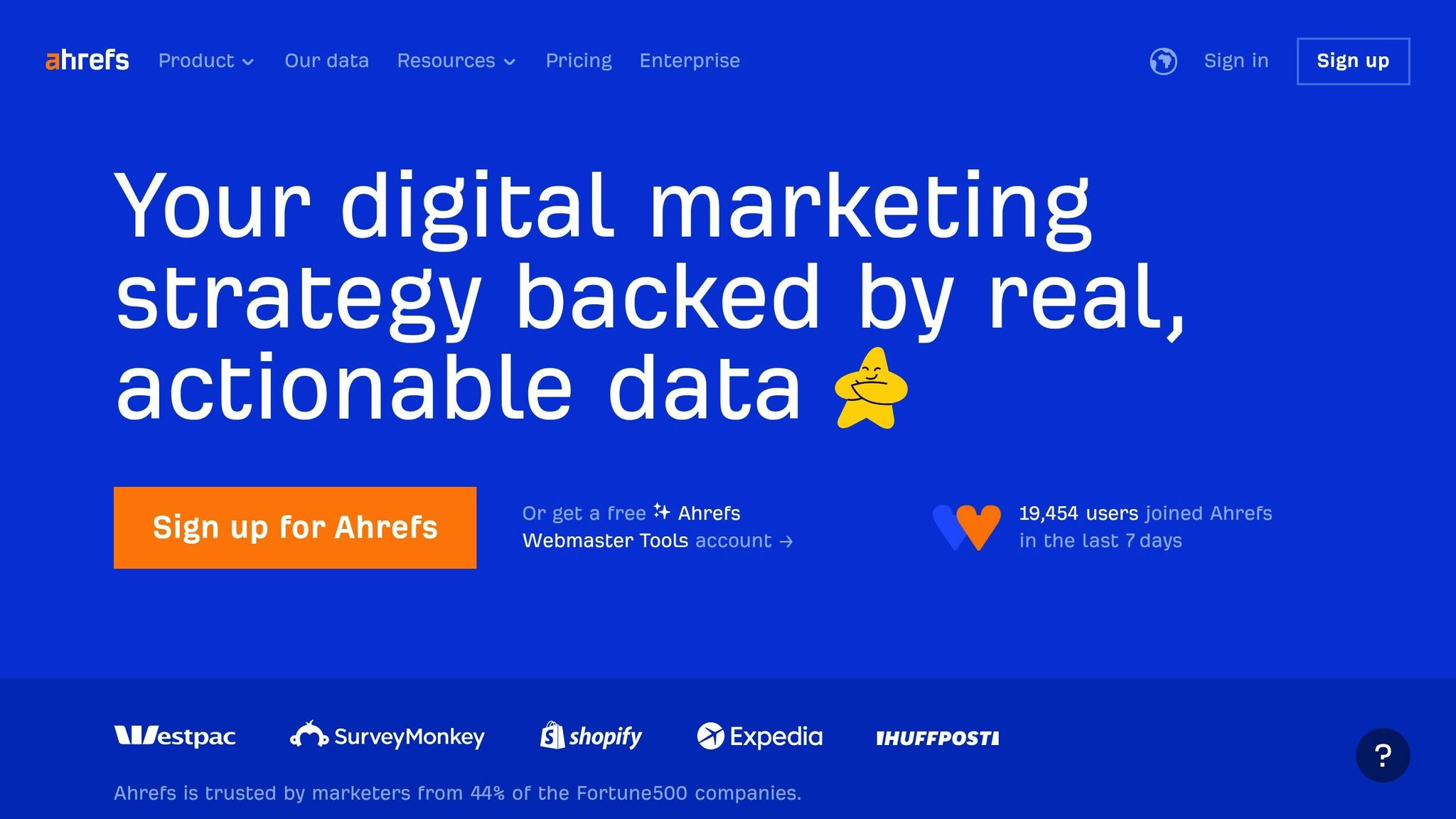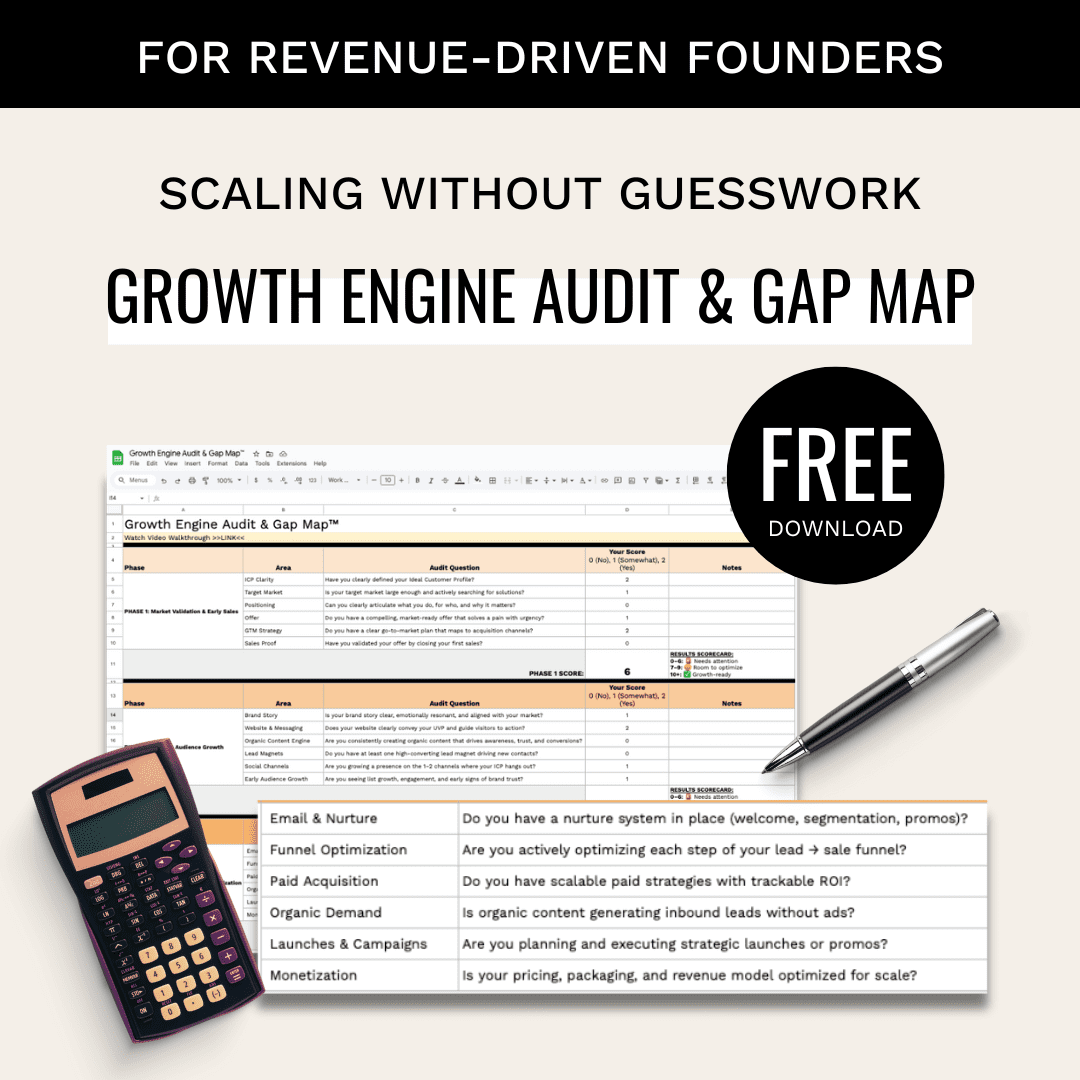Product-led content focuses on using your product as the main driver for marketing and growth. Instead of traditional branding, this strategy highlights how your product solves user problems and encourages adoption. Here’s the gist:
- What It Is: Content that showcases product features, benefits, and real-world examples to drive engagement and retention.
- Why It Works: Reduces marketing costs, improves user onboarding, boosts retention, and scales growth.
- How to Do It:
- Match content to user stages (awareness, consideration, decision, adoption, retention).
- Create guides, demos, and success stories to educate and engage users.
- Distribute content via in-product placements, email, blogs, and social media.
- Track metrics like engagement, adoption, and retention to refine your strategy.
This approach helps SaaS companies turn content into a tool for both acquiring and keeping users.
Product-led Content: How we Do Content Marketing at Ahrefs

Content for Each User Stage
Match your content to each stage of the user journey to encourage product adoption and long-term engagement.
Content Types by Sales Stage
Every stage of the buyer’s journey calls for specific types of content to guide users effectively toward adopting your product. Here’s a breakdown:
| Stage | Content Type | Purpose |
|---|---|---|
| Awareness | Feature Spotlights, Blog Posts | Address key challenges and present possible solutions |
| Consideration | Product Demos, Use Cases | Show how the product works and its practical benefits |
| Decision | ROI Calculators, Trial Guides | Provide clear reasons to choose your product |
| Adoption | Onboarding Tutorials, Quick Tips | Help users quickly access and use core features |
| Retention | Advanced Guides, Success Stories | Highlight advanced tools and real-world success stories |
"A common issue that I’ve seen companies face is over-investing in full-time senior roles for strategy development, leading to these individuals spending a majority of their time on executional tasks. A fractional approach allows for a balanced investment between strategic leadership and executional roles, thus ensuring optimal resource allocation." – Lillian Pierson, Data-Mania
Next, focus on creating training materials that guide users step by step in mastering your product.
User Training Content
These training strategies are designed to provide immediate benefits while helping users advance their skills over time:
- Core Feature Guides
Create guides that focus on delivering quick wins with measurable outcomes. - Progressive Learning Paths
Start with must-know features and gradually introduce more advanced tools. - Interactive Elements
Add hands-on exercises and progress tracking to improve user engagement and retention.
Creating Product-Focused Content
Selecting Features to Highlight
Focus on features that solve user problems and provide clear benefits. Use data and feedback to decide which ones to prioritize. Pay attention to what drives engagement and conversions.
- User adoption rates: Highlight features that are already popular.
- Customer support queries: Address frequently asked questions upfront.
- Sales team feedback: Emphasize features that help close deals.
- Competitive advantage: Showcase capabilities that set you apart.
Once you’ve identified the right features, focus on creating clear and actionable content.
Writing How-to Content
Develop content that helps users achieve specific goals with your product. Make it easy to follow and immediately useful, while also encouraging deeper engagement.
Here’s how to structure it:
- Start with clear outcomes
Break down complex tasks into simple steps. Each guide should focus on one specific goal that users can achieve quickly. - Include visual elements
Use screenshots, GIFs, or videos to make instructions easier to understand and remember. - Provide context
Explain not just how to use a feature but why it’s important and what problems it solves. This helps users see the bigger picture.
| Content Type | Purpose | Key Elements |
|---|---|---|
| Quick Start Guides | Immediate wins | Step-by-step instructions for first tasks |
| Feature Deep Dives | Advanced usage | Technical details, best practices, use cases |
| Troubleshooting | Problem resolution | Common issues with step-by-step solutions |
Next, use customer stories to bring these strategies to life.
Customer Success Stories
Once you’ve created effective guides, real-world examples can show how your product delivers results. Highlighting customer wins adds credibility and demonstrates impact:
"Through Lillian’s service, we got incredible value. More specifically, her outreach delivered over 1 million views and 45,000 engagements in 3 months. We hope to bring her on again for next year’s campaign."
– Kevin Allen, Manager, IBM Developer Content Acquisition, IBM
Turn these stories into engaging narratives by focusing on:
- Specific challenges: Describe the problems your customers faced.
- Implementation journey: Share the steps taken to address those issues.
- Measurable results: Include data and outcomes to back up the story.
- Customer quotes: Use testimonials to add authenticity.
"In data & AI, it is a rare find to come across someone as dedicated and adept as Lillian Pierson. Her partnership with us has been nothing short of transformative. Her approach is characterized by a genuine curiosity and a commitment to understanding every facet of our brand. This has enabled her to craft strategies that are not only effective in bringing our product to market but also in ensuring that it resonates with our target audience. We are immensely grateful for her unwavering support and are privileged to have her as our partner."
– Matt Brown, Head of Global Growth, Single Store
sbb-itb-e8c8399
Content Distribution Methods
To make the most of a product-led growth approach, share content both inside your product and through external channels.
In-Product Content Placement
Use in-app placements to help users discover features naturally as they navigate your product.
Here are some effective strategies:
- Onboarding sequences: Include welcome screens with tutorials, progress indicators, and interactive walkthroughs to guide users through the initial setup.
- Feature discovery tooltips: Add contextual hints for new sections, quick-start guides within features, and optional deep-dive resources for advanced users.
- Help documentation: Provide a searchable knowledge base, context-sensitive help articles, and video tutorials directly accessible from relevant screens.
| Content Type | Placement Location | Timing |
|---|---|---|
| Quick Tips | Feature interface | First interaction |
| Tutorials | Help menu | After basic familiarity |
| Advanced Guides | Settings pages | During deep usage |
| Updates | Dashboard notifications | Post-feature launch |
These in-app tactics lay the groundwork for extending your reach through external channels.
External Channel Strategy
Email Communication
- Share newsletters with product updates.
- Send targeted tips or training announcements based on user activity.
- Highlight success stories showcasing real-world results.
Blog and Resource Center
- Publish detailed feature breakdowns, integration guides, and customer case studies.
- Share industry insights and best practices.
Social Media Strategy
- Post short tips on platforms like Twitter or LinkedIn.
- Share feature demos on YouTube.
- Engage with users in product forums.
- Host live Q&A sessions with your product team.
Content Syndication
- Write guest posts for industry blogs.
- Appear on podcasts to discuss features.
- Host webinars with complementary tools.
- Publish developer documentation on relevant platforms.
Maintain consistent messaging across channels and adjust based on engagement metrics to optimize timing and frequency.
| Channel | Content Format | Primary Goal |
|---|---|---|
| Short, actionable tips | Direct engagement | |
| Blog | In-depth guides | SEO & education |
| Social | Quick visual content | Awareness & community |
| Forums | Discussion threads | User support |
Performance Tracking and Updates
To measure how well your product-led content strategy is working, it’s essential to track key metrics and use data to make continuous improvements.
Content Success Metrics
Here are some important metrics to monitor:
- User Engagement: Look at time spent on pages, scroll depth, and video completions. Also, track feature activation rates, reduced support tickets, time spent in your product, and milestone achievements.
- Product Adoption: Check how quickly and widely users activate key features and move through your product’s workflow.
- Retention: Identify patterns like repeat visits, completion of content series, and how helpful users find your support articles.
- Revenue Impact: Measure how content engagement contributes to conversion rates and upgrades.
These metrics provide actionable insights for testing and improving your strategy.
Testing and Data Analysis
Refining your product-led content strategy requires a structured approach to testing and data analysis. Here’s how to get started:
1. Set Up a Testing Framework
Run controlled experiments to evaluate the effectiveness of your content. Test different formats (like text, video, or interactive content), placements within your product, delivery timing, and the level of detail in your explanations.
2. Track User Behavior
Collect data on user interactions at various touchpoints. Focus on initial engagement, follow-up actions, and long-term retention to understand how your content impacts user behavior.
3. Analyze and Adjust
Regularly review performance data to identify opportunities for improvement. Pinpoint which content resonates most with users and tweak underperforming pieces based on these findings.
"Marketing without strategy is a recipe for disaster." – Lillian Pierson, Data-Mania
Implementation Tips
- Use both quantitative and qualitative tracking for a complete picture.
- Evaluate content performance across different user segments to make targeted updates.
- Identify where users drop off in their journey and address those pain points.
- Test content variations with small groups before rolling them out to your entire audience.
Conclusion: Next Steps
Start by evaluating your brand to pinpoint areas that need improvement. From there, create a strategy grounded in data that connects your content efforts to clear, measurable business goals. Use these findings to guide your next steps.
Make sure your strategy includes clear KPIs and strong leadership to keep your team on track. Aligning your content with your product’s strengths is key to driving user engagement and business growth. Focus on methods that are cost-effective and can scale as your company grows.
Looking to take your SaaS content strategy to the next level? Data-Mania specializes in consulting services for technology companies, helping them craft and execute strategies that fuel product-led growth. Our team provides the expertise you need to turn your content into a tool for boosting user adoption and achieving long-term success.
Related Blog Posts
- Product-Led Growth vs Sales-Led Growth: Which Fits Your SaaS?
- How to Build a SaaS Marketing Strategy from Scratch
- Ultimate Guide to Self-Serve Product-Led Growth
- Ultimate Guide to Cross-Functional PLG Alignment




